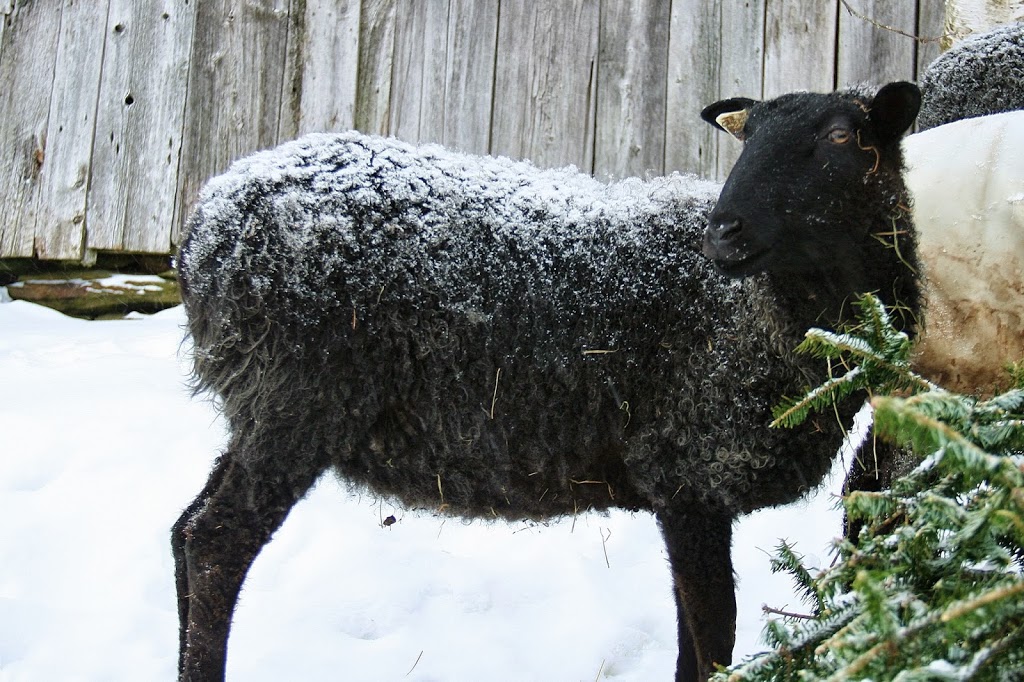How Can Sheep Survive Bitter Cold Weather
This post first appeared on Kim Goodling’s blog at http://www.livingwithgotlands.com/. Kim is shepherdess to a flock of Gotlands, the curly sheep from Sweden. She invites farm stay guests to experience rural living, sheep, and fiber art at her farm in Vermont. See her Farm Stay U.S. listing at Vermont Grand View Farm or visit her website.
We thought with all the challenging weather happening across the country right now, a post on how sheep can survive such cold temps would be interesting… enjoy!
I am often asked how my sheep can survive the harsh Vermont winter weather. Temperatures in our area often hover in the single digits with spells well below zero at times. Snow piles high around the barn, and cold winds blow frequently. With proper shelter and feed, our sheep have no difficulty with these winter conditions and cold temperatures.
Proper Housing
Visitors to our farm often think that a closed barn provides the best place for our livestock in the winter. In fact, that is the last thing that they need. Being shut in a barn, causes a build up of moisture and ammonia in the air, irritating their respiratory tract and causing infection. Sheep stay much healthier if they have access to sun and fresh air every day.
The thermometer registered 15 degrees below zero this morning, with wind chills between 40-60 degrees below zero. On days like this, our barn door remains open for the sheep to come and go as they please. The barn offers protection from the bitter wind, but certainly not much protection from the cold. This morning, all the sheep, as well as the llama, were hunkered down in the barn. With the gusty wind, we fed them their hay in the barn so they did not have to brave the subzero wind chill to eat breakfast. We also have a three sided shelter which provides a wind break for them. The sun shines into the shelter all day, giving the sheep a place out doors, with protection from the wind, without having to be inside the barn.

Warm From the Outside In
Sheep have their own natural source of insulation all over their bodies. Their wool keeps their body heat in and the cold out. That is why you will see sheep with snow piled on their backs; their body heat does not reach the outer layers of their fleece to melt the snow. The lanolin in their wool also prevents moisture from getting to their skin. When doing chores, if my hands get cold, I will take off my mittens and bury my hands in the wool on one of the ewes to get warm.

Warm From the Inside Out
We do give the sheep lots of second cut hay during the winter to eat. Due to the fermentation of fibrous matter, the rumination process actually creates a great deal of heat. This warms the sheep from the inside out, thus the need for good quality hay throughout winter months. The more sheep eat, the more heat they produce. A pregnant ewe will also have added heat from the lamb growing inside of her. The shepherd may provide added energy to their diet during extreme cold weather. We give warm molasses water when the temps dip in the single digits for added energy.

With shelter from the wind and proper nutrition-our sheep stay healthy and happy all winter.
buy enclomiphene uk online pharmacy
order enclomiphene online canada